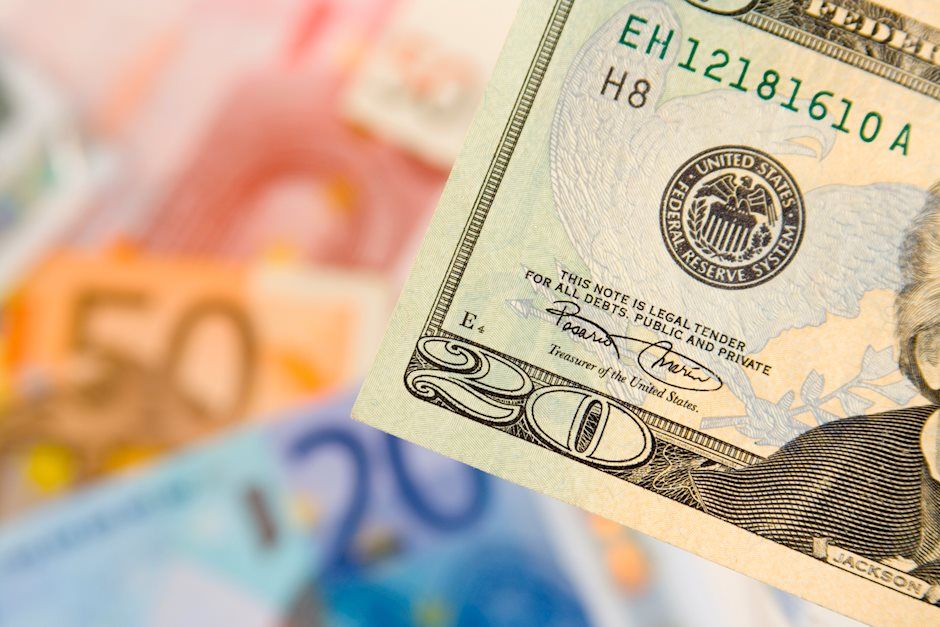EUR/USD unplugs bullish attempt, slips back below 1.05
- EUR/USD shed a fresh fifth of a percent against the Greenback on Tuesday.
- Fed-centric US data docket dominates investor sentiment.
- EU data remains light this week, traders focus on upcoming Fed rate call.

Bullish momentum behind the Euro evaporated on Tuesday, dragging the pair back beneath the 1.0500 handle as traders buckle down for the wait to the Federal Reserve’s (Fed) last rate call of 2024. European data is relatively sparse this week, compelling Fiber traders to navigate a substantial array of US data.
Euro markets largely overlooked multiple European Central Bank (ECB) officials' appearances earlier in the week, and despite European December PMI figures surpassing expectations. Pan-EU Services PMI survey figures still remain in contraction due to concerns over a deepening economic slowdown in Europe, which continues to unsettle investors and businesses.
US Retail Sales figures lurched higher to 0.7% MoM, stoking some mild concern among investors that maybe the Fed doesn’t need to pursue an aggressive rate-cutting strategy after all, especially when counting a recent uptick in inflation metrics. Despite this, markets are still broadly pricing in a third straight rate cut from the Fed on Wednesday, with 95% odds favoring a 25 bps rate trim according to the CME’s FedWatch Tool.
EUR/USD price forecast
The EUR/USD daily chart reveals a period of consolidation just above the 1.0450 level after the pair’s steep decline from its late October highs near 1.1000. This recent stabilization coincides with investor expectations surrounding the Federal Reserve's anticipated quarter-point rate cut on Wednesday, which has injected a degree of uncertainty into the greenback’s trajectory. The price action remains capped by the 50-day Exponential Moving Average (EMA) at 1.0658, with the longer-term bearish bias underscored by the 200-day EMA at 1.0809, sloping downward. A break below the key support at 1.0450 could see bears retesting the psychological 1.0400 level, which served as a critical floor in late November.
The MACD indicator at the bottom of the chart shows bearish momentum has eased slightly, as the MACD line flattens and approaches a bullish crossover with the signal line. However, the histogram remains in negative territory, suggesting that upside attempts may still face significant headwinds. A Fed rate cut on Wednesday, if accompanied by a dovish tone, could weaken the dollar further, paving the way for a rebound toward 1.0600 and potentially the 50-day EMA resistance. Conversely, a hawkish surprise may reinforce the dollar’s strength, triggering renewed selling pressure on the EUR/USD pair and opening the door for a retest of yearly lows. Traders are likely to remain cautious ahead of the Fed decision, keeping price action in a tight range in the short term.
EUR/USD daily chart

Euro FAQs
The Euro is the currency for the 19 European Union countries that belong to the Eurozone. It is the second most heavily traded currency in the world behind the US Dollar. In 2022, it accounted for 31% of all foreign exchange transactions, with an average daily turnover of over $2.2 trillion a day. EUR/USD is the most heavily traded currency pair in the world, accounting for an estimated 30% off all transactions, followed by EUR/JPY (4%), EUR/GBP (3%) and EUR/AUD (2%).
The European Central Bank (ECB) in Frankfurt, Germany, is the reserve bank for the Eurozone. The ECB sets interest rates and manages monetary policy. The ECB’s primary mandate is to maintain price stability, which means either controlling inflation or stimulating growth. Its primary tool is the raising or lowering of interest rates. Relatively high interest rates – or the expectation of higher rates – will usually benefit the Euro and vice versa. The ECB Governing Council makes monetary policy decisions at meetings held eight times a year. Decisions are made by heads of the Eurozone national banks and six permanent members, including the President of the ECB, Christine Lagarde.
Eurozone inflation data, measured by the Harmonized Index of Consumer Prices (HICP), is an important econometric for the Euro. If inflation rises more than expected, especially if above the ECB’s 2% target, it obliges the ECB to raise interest rates to bring it back under control. Relatively high interest rates compared to its counterparts will usually benefit the Euro, as it makes the region more attractive as a place for global investors to park their money.
Data releases gauge the health of the economy and can impact on the Euro. Indicators such as GDP, Manufacturing and Services PMIs, employment, and consumer sentiment surveys can all influence the direction of the single currency. A strong economy is good for the Euro. Not only does it attract more foreign investment but it may encourage the ECB to put up interest rates, which will directly strengthen the Euro. Otherwise, if economic data is weak, the Euro is likely to fall. Economic data for the four largest economies in the euro area (Germany, France, Italy and Spain) are especially significant, as they account for 75% of the Eurozone’s economy.
Another significant data release for the Euro is the Trade Balance. This indicator measures the difference between what a country earns from its exports and what it spends on imports over a given period. If a country produces highly sought after exports then its currency will gain in value purely from the extra demand created from foreign buyers seeking to purchase these goods. Therefore, a positive net Trade Balance strengthens a currency and vice versa for a negative balance.
Author

Joshua Gibson
FXStreet
Joshua joins the FXStreet team as an Economics and Finance double major from Vancouver Island University with twelve years' experience as an independent trader focusing on technical analysis.

















